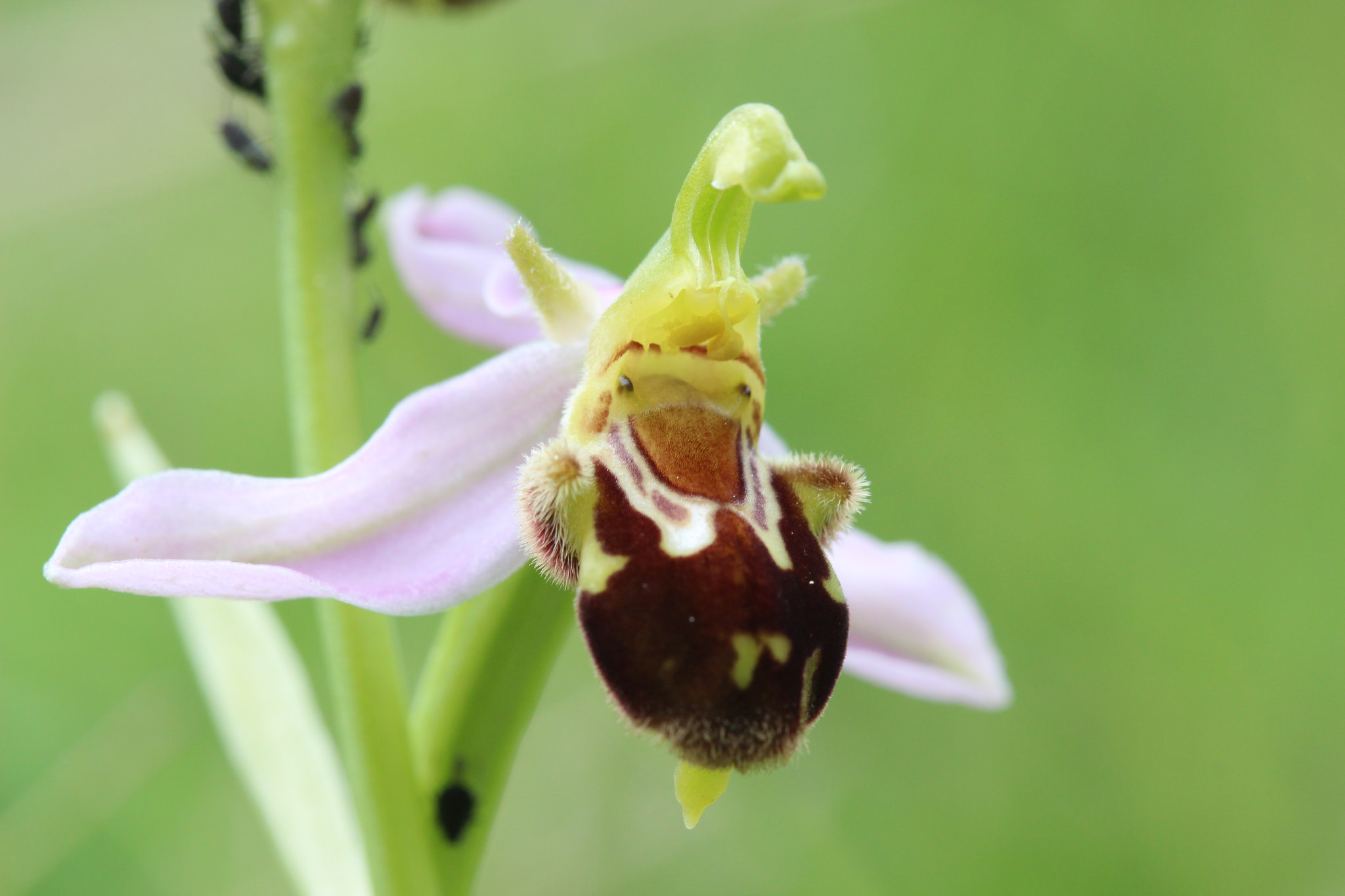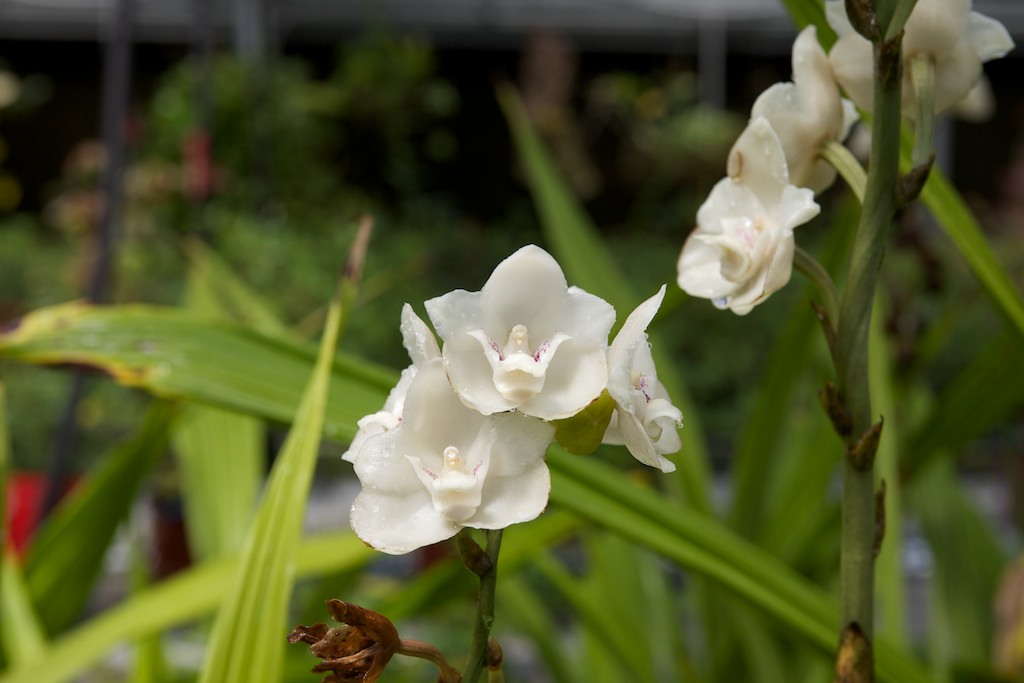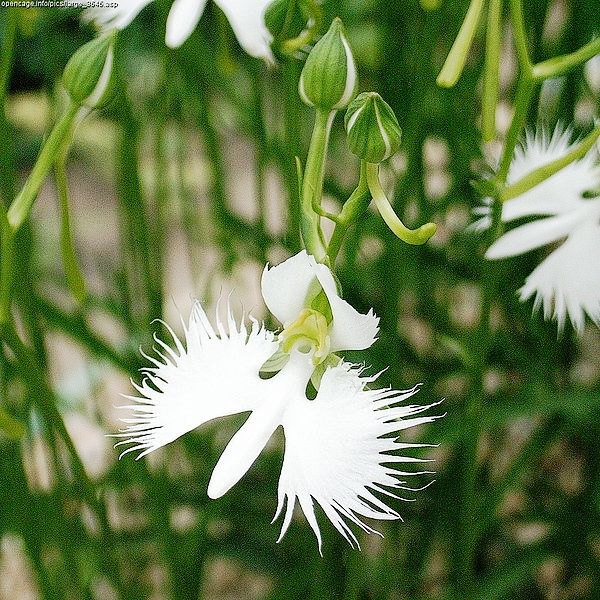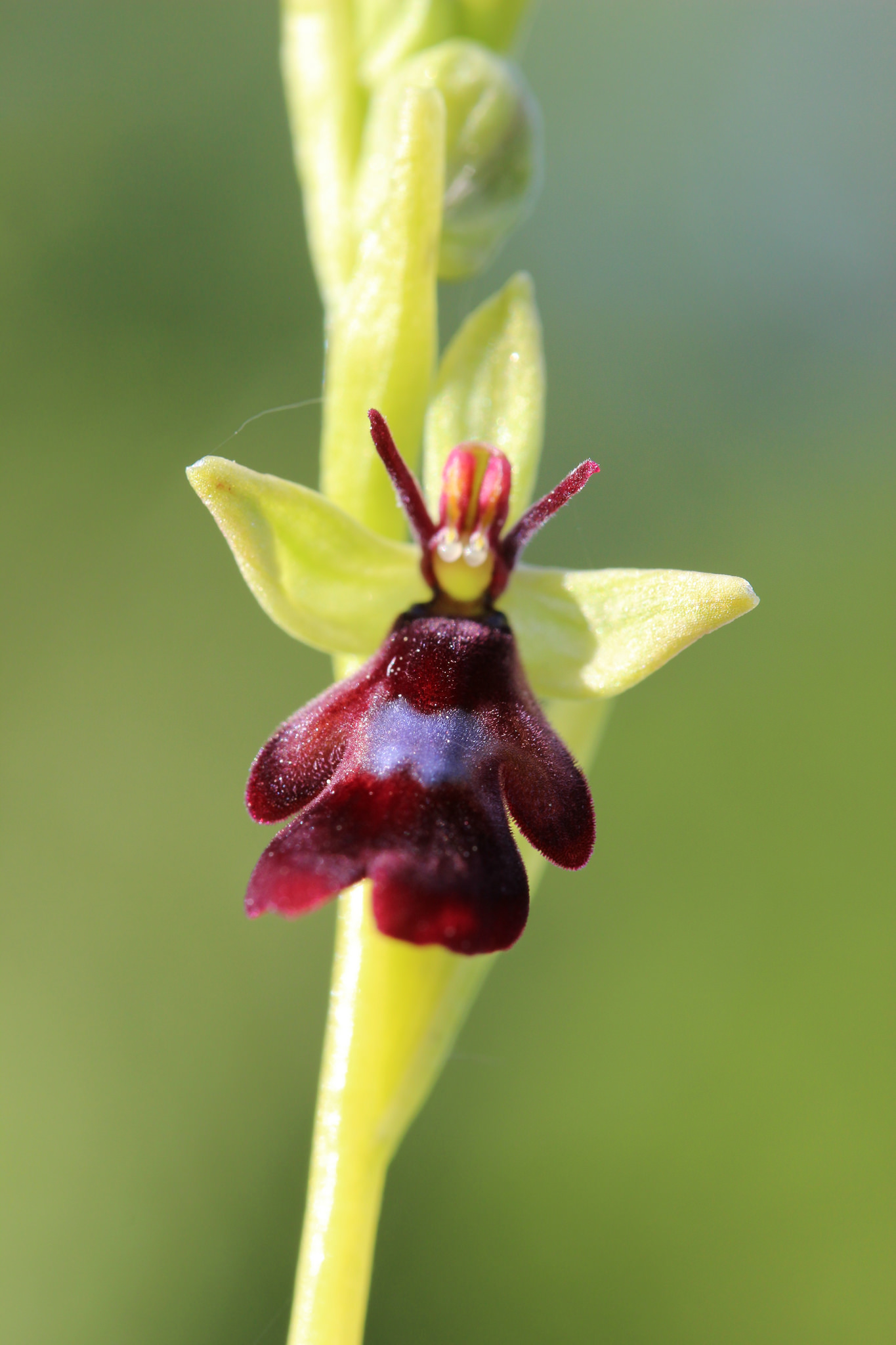6 Incredible Flowers that Look Like Animals
Although most of us think of orchids as exotic and rare, the orchid family is one of the largest families of flowers, with between 21,000 and 26,000 species. When you think of orchids, chances are good that you think of the elegant moth orchids or cattleya orchids sold in grocery stores; however, these are only two species out of thousands. It is time to expand your horizons and learn about some of the more unusual orchids. I have compiled photos and information on six fascinating orchids that look like animals-believe it or not, they are real! Bee Orchid, Ophrys apifera I probably don't need to explain to you how this flower got its name, but I will anyway. The bee orchid resembles a female Eucera bee looking for nectar on a pink flower. The flower had a purpose for this mimicry: Males are attracted to this decoy female, and in the process of trying to mate with it, they are covered in pollen, which they then carry to the next orchid, thereby pollinating it. The plant also produces a scent that attracts the bees. The bee orchid is native to Europe and even North Africa and the Middle East.
Monkey Face Orchid, Dracula simian
I probably don't need to explain to you how this flower got its name, but I will anyway. The bee orchid resembles a female Eucera bee looking for nectar on a pink flower. The flower had a purpose for this mimicry: Males are attracted to this decoy female, and in the process of trying to mate with it, they are covered in pollen, which they then carry to the next orchid, thereby pollinating it. The plant also produces a scent that attracts the bees. The bee orchid is native to Europe and even North Africa and the Middle East.
Monkey Face Orchid, Dracula simian When I saw this orchid, I wasn't sure whether I should pick it or pet it! This cute and rare little flower is native to the cloud forests of Ecuador and Peru, and not many people are lucky enough to ever see it growing in its native habitat. As if it weren't enough that the flowers look like adorable monkey faces, the flowers also smell like oranges. Unfortunately, growing this flower at home is difficult unless you have a cool greenhouse that mimics the conditions of cloud forests.
Dove Orchid, Peristeria elata
When I saw this orchid, I wasn't sure whether I should pick it or pet it! This cute and rare little flower is native to the cloud forests of Ecuador and Peru, and not many people are lucky enough to ever see it growing in its native habitat. As if it weren't enough that the flowers look like adorable monkey faces, the flowers also smell like oranges. Unfortunately, growing this flower at home is difficult unless you have a cool greenhouse that mimics the conditions of cloud forests.
Dove Orchid, Peristeria elata [Photo by Malcolm Manners
If you look closely at the center of the dove orchid, you will see where it gets its name; a dove, complete with yellow beak and wings, seems to be hidden within the flower. This fragrant flower is an epiphyte native to Central America, and it is the national flower of Panama. The dove orchid is endangered in the wild, but it has been successfully grown in nurseries, and you can even buy one, although it does need more care than your average houseplant.
Flying Duck Orchid, Caleana major
[Photo by Malcolm Manners
If you look closely at the center of the dove orchid, you will see where it gets its name; a dove, complete with yellow beak and wings, seems to be hidden within the flower. This fragrant flower is an epiphyte native to Central America, and it is the national flower of Panama. The dove orchid is endangered in the wild, but it has been successfully grown in nurseries, and you can even buy one, although it does need more care than your average houseplant.
Flying Duck Orchid, Caleana major [Photo by Doug
I love this little flower just because it is so unique! The small maroon flower honestly looks like a duck in flight with its wings stretched out behind it. The flying duck orchid is native to eastern and southern Australia. What looks like a flying duck to us actually looks like a female sawfly to male sawflies. They try to mate with the flower, but alas, it is a ruse! The beak portion of the orchid is actually a trap that is triggered when the insect lands on it. The sawfly can't get out without pollinating the flower and picking up more pollen. The flying duck orchid has a symbiotic relationship with a type of fungus that helps it to survive; unfortunately, this means that it can't be successfully grown in the home.
White Egret Orchid, Habenaria radiata
[Photo by Doug
I love this little flower just because it is so unique! The small maroon flower honestly looks like a duck in flight with its wings stretched out behind it. The flying duck orchid is native to eastern and southern Australia. What looks like a flying duck to us actually looks like a female sawfly to male sawflies. They try to mate with the flower, but alas, it is a ruse! The beak portion of the orchid is actually a trap that is triggered when the insect lands on it. The sawfly can't get out without pollinating the flower and picking up more pollen. The flying duck orchid has a symbiotic relationship with a type of fungus that helps it to survive; unfortunately, this means that it can't be successfully grown in the home.
White Egret Orchid, Habenaria radiata [Photo by VanLap Hog]
This flower resembles a white egret showing off its fantastic plumage, as you can plainly see. The white egret orchid grows wild in Japan, Korea, and parts of China, but it is in danger of extinction, mostly due to habitat destruction. I found it interesting to learn that in Japan, both real white egrets and white egret orchids live in the same wetland habitat! These orchids can be bought and grown in similar conditions to a bog orchid or pitcher plant.
Fly Orchid, Ophrys insectifera
[Photo by VanLap Hog]
This flower resembles a white egret showing off its fantastic plumage, as you can plainly see. The white egret orchid grows wild in Japan, Korea, and parts of China, but it is in danger of extinction, mostly due to habitat destruction. I found it interesting to learn that in Japan, both real white egrets and white egret orchids live in the same wetland habitat! These orchids can be bought and grown in similar conditions to a bog orchid or pitcher plant.
Fly Orchid, Ophrys insectifera [Photo by: Bj?rn S... ]
Like the bee orchid, the fly orchid is native to Europe and also Russia, though its numbers are declining. The fuzzy brown flowers may not be the prettiest orchids to our human eyes, but to the male wasp of the Argogorytes genus, nothing is more beautiful, as the flower looks and smells like a female of its species. As the wasp attempts to mate with the decoy female, it is covered in pollen, which it will carry to the next fly orchid it visits. This orchid is another one that lives in a symbiotic relationship with fungi.Chad Kremp
[Photo by: Bj?rn S... ]
Like the bee orchid, the fly orchid is native to Europe and also Russia, though its numbers are declining. The fuzzy brown flowers may not be the prettiest orchids to our human eyes, but to the male wasp of the Argogorytes genus, nothing is more beautiful, as the flower looks and smells like a female of its species. As the wasp attempts to mate with the decoy female, it is covered in pollen, which it will carry to the next fly orchid it visits. This orchid is another one that lives in a symbiotic relationship with fungi.Chad Kremp September 29, 2014
Comments



